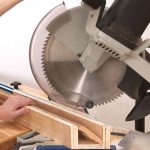We may receive a commission when you use our affiliate links. However, this does not impact our recommendations.

It was a steamy day in southern Kentucky when I visited South Union, but as I walked into the 1824 Centre House the thick brick walls provided a cool respite from the heat and, as I’ve found in the other Shaker buildings that I’ve visited, a sense of calm and separation from the outside world. The peacefulness was visually reinforced by the order and balance in the interior design of the buildings. The entrance hall of the South Union Centre House, which was once a “family” dwelling house, demonstrates that balance beautifully.
 Several of the “brothers” and “sisters” retiring rooms (sleeping rooms) are furnished with original South Union Shaker furniture. The furniture in one of the sisters’ rooms was surprisingly fancy. But the Shakers were a practical bunch, and once the cost of building furniture outgrew the cost of buying it, they shopped at Sears and Montgomery Ward.
Several of the “brothers” and “sisters” retiring rooms (sleeping rooms) are furnished with original South Union Shaker furniture. The furniture in one of the sisters’ rooms was surprisingly fancy. But the Shakers were a practical bunch, and once the cost of building furniture outgrew the cost of buying it, they shopped at Sears and Montgomery Ward.
Other rooms are used for museum displays of everyday Shaker life – laundry, weaving, broom-making, selling seeds and fruit preserves. A room filled with linen presses; another with a variety of Shaker chairs. A schoolroom. A display of architectural remnants of Shaker buildings that no longer exist.
 South Union has a large display of Shaker furniture. The Shaker Museum at South Union, a nonprofit educational organization, has diligently searched out and reacquired pieces that were built there. And many folks have generously donated known South Union pieces back to the museum. Two enormous pie safes remain in the kitchen and dining room in the basement of the Centre House, safe from the auction that scattered the rest of the furniture since they were considered too large for most homes and too bulky to move.
South Union has a large display of Shaker furniture. The Shaker Museum at South Union, a nonprofit educational organization, has diligently searched out and reacquired pieces that were built there. And many folks have generously donated known South Union pieces back to the museum. Two enormous pie safes remain in the kitchen and dining room in the basement of the Centre House, safe from the auction that scattered the rest of the furniture since they were considered too large for most homes and too bulky to move.

Across the street from the Centre House is the site of the original Meeting House. Only the foundation remains, since the building was torn down for its Shaker-made bricks, which were used to build a home for the new owner of the Shaker property after the auction. But in a great example of “what goes around, comes around,” that railroad tie-magnates’ house was later torn down by the museum group, and the original Shaker bricks were used to repair the tornado-damaged Centre House.
 Behind the Meeting House foundation is an orchard, which was loaded with beautiful pears and apples the day I was there, and an 1875 Grain Barn, which is in the process of being restored. The barn swallows weren’t happy with my intrusion, but being a farm girl, I just had to see the barn.
Behind the Meeting House foundation is an orchard, which was loaded with beautiful pears and apples the day I was there, and an 1875 Grain Barn, which is in the process of being restored. The barn swallows weren’t happy with my intrusion, but being a farm girl, I just had to see the barn.
South Union Shaker Village is just off US 68-80, southwest of Bowling Green, Ky. The village was founded in 1807, and eventually grew to nearly 230 structures and 6,000 acres before it was disbanded and the land and furnishings sold at auction. Only four of those buildings are currently open to the public, but well worth the trip.
To see a slideshow with more of my photos of South Union, click here. For more information about South Union Shaker Village, visit the museum’s web site: shakermuseum.com.
Here are some supplies and tools we find essential in our everyday work around the shop. We may receive a commission from sales referred by our links; however, we have carefully selected these products for their usefulness and quality.










Great post. I got the chance to go to the Hancock Shaker Village in MA. I was inspired to try some bent wood projects. Here is a link to some shots from the trip: http://www.flickr.com/photos/dailymemorandum/sets/72157621742373327/